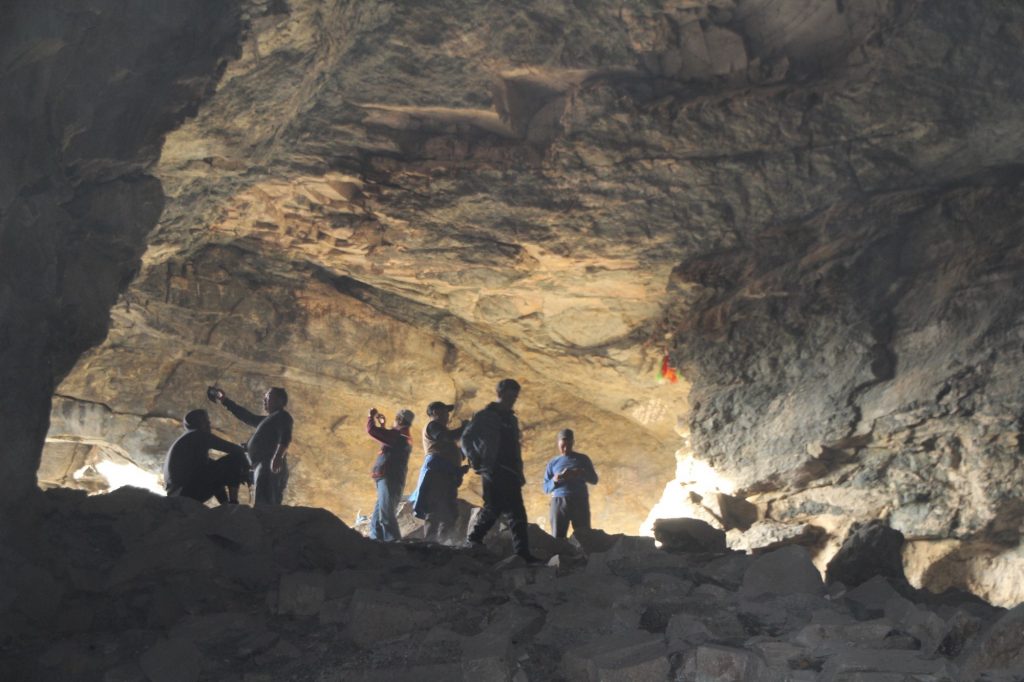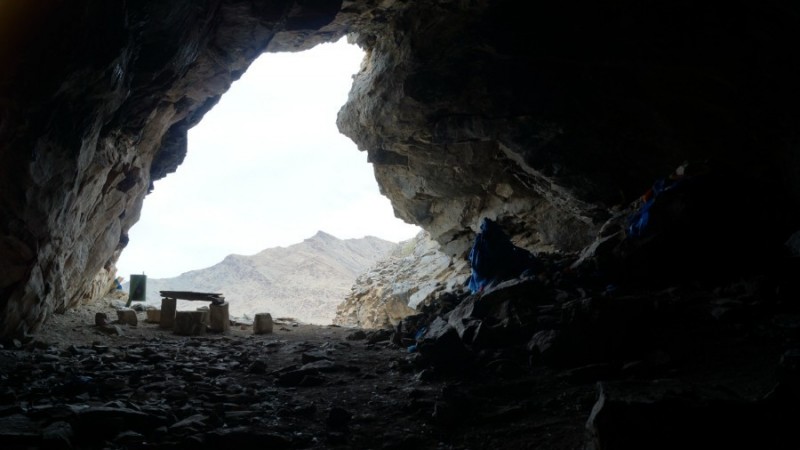It is a cave located 25 kilometers to the west of Mankhan village of Khovd province and 2100-2400 meters above sea level. It is composed of carbonate rock and white-gray calcareous marble.
The height of the inner wall is 15 m, the height from the floor to the ceiling is 20 m, and the ceiling is hollow from the inside to the outside with a spherical roof. The walls of the cave have darkened due to flames of fire proving that the cave was inhabited for a long time. There are also 40,000-year-old petroglyphs on the walls of the cave.

The walls and roof of the cave depict a variety of animals including ostriches, turkeys, cranes, camels, mammoths, buffaloes with large horns, antelopes, snakes as well as trees shaped like spruce. There are also a few petroglyphs that have been dated to later eras.
These are painted in bold red and light ochre, and some animals are depicted on top of each other, while some are depicted using a multi-spotted dotted outline. Among the overlapping images, one that clearly depicts the sex of a male deer is striking.
Due to the animals depicted there, the paintings appear to date back to the Paleolithic Age, as the animals were extinct in Mongolia. Of these extinct animals, the mammoth attracts the most attention.
In 1998, a joint expedition of the National University of Mongolia and the Khovd branch school of the University discovered the remains of a mammoth (they found 70 percent of its skeleton) in a place named Teserkhii of Buultin Bulag located in Durgun village. This proves that the animal existed in Mongolia. The paintings were hammered with a flint chisel and then painted with red ocher and dust paint.
The petroglyph of Khoit Tsenkheriin Cave is considered to be an important artifact as there are very few rock-paintings dating back to the Stone Age in Mongolia. Given the fact that the depicted animals lived in Mongolia this testifies to the warm climate of Mongolia at that time.
Scholars and scientists who have studied the cave have concluded that “Asian art was originated in Central Asia, namely in Mongolia.” It is also known as the “Heart of the art of the Central Asian primitive community.” Khoit Tsenkheri Cave is so named because it is located on the banks of the Tsenkher River in Khovd province.
The cave was first discovered by geographer and scientist Namnandorj.O and then studied by Mongolian-Soviet archaeologists Ser-Odjav.N, Tseveendorj.D, Dorj.D, Okladnikov.A.P, Larichev.V.V and Derevyanko.A.P
There are five petroglyphs in Mongolia that date to the Paleolithic Age out of which three of them are located in Khovd province. One of them is located in Khoit Tsenkheriin Cave.
It is also known as the “Gurvan Tsenkheriin Agui” which means the Cave of the Three Blues. It is so called because three rivers named Tsenkher, Middle Tsenkher and Northern Tsenkher which originate from the north of the Mongol Altai Mountain range, flow through the center of Mankhan village.

